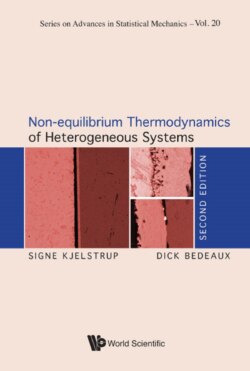Читать книгу Non-equilibrium Thermodynamics of Heterogeneous Systems - Signe Kjelstrup - Страница 31
4.2.2States with minimum entropy production
ОглавлениеWhen a system is close to global equilibrium, one may linearize the equations that describe the time evolution of the system. All the transport coefficients in Eq. (1.2) are then constant. Prigogine showed that stationary states of discontinuous systems, maintained for instance by a temperature difference, have a minimum entropy production [18]. This is sometimes called the Prigogine principle. For stationary states far from global equilibrium, the transport coefficients are no longer constant across the whole system, and the stationary state has no longer a minimum entropy production compared to non-stationary states [120, 121].
In the design of industrial systems, it is fruitful to ask a different question. We can ask for the path that a system must follow to obtain minimum entropy production [122]. This question leads to an optimization problem that is constrained by the performance, for instance by the composition of the chemicals that are produced. The transport coefficients of the system are then considered as given. The nature of systems with minimum total entropy production dSirr/dt has been studied extensively since 1982 by Bejan and coworkers, see [87, 88] (mostly mechanical systems) and by Kjelstrup and coworkers since 1995, see [32] (mostly chemical systems).
Johannessen and Kjelstrup [94] found that much of the path of an optimal chemical reactor was characterized by constant local entropy production, provided that the system had enough degrees of freedom to find this path. This was called the highway hypothesis. In all cases, the entropy production, and not the dissipation function, was used as proper objective function. Bejan [88, p. 227] showed that the state of minimum entropy production was equal to the state of maximum power, contrary to other claims [123], see also [32].
